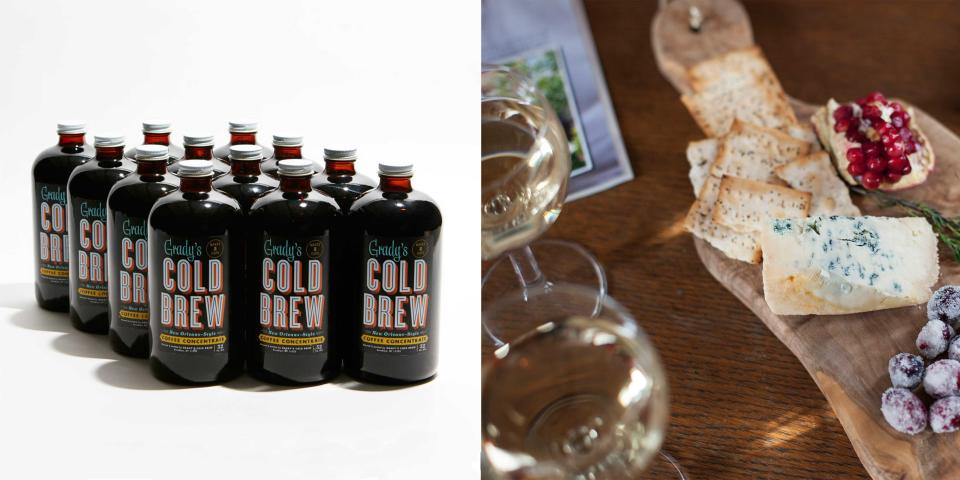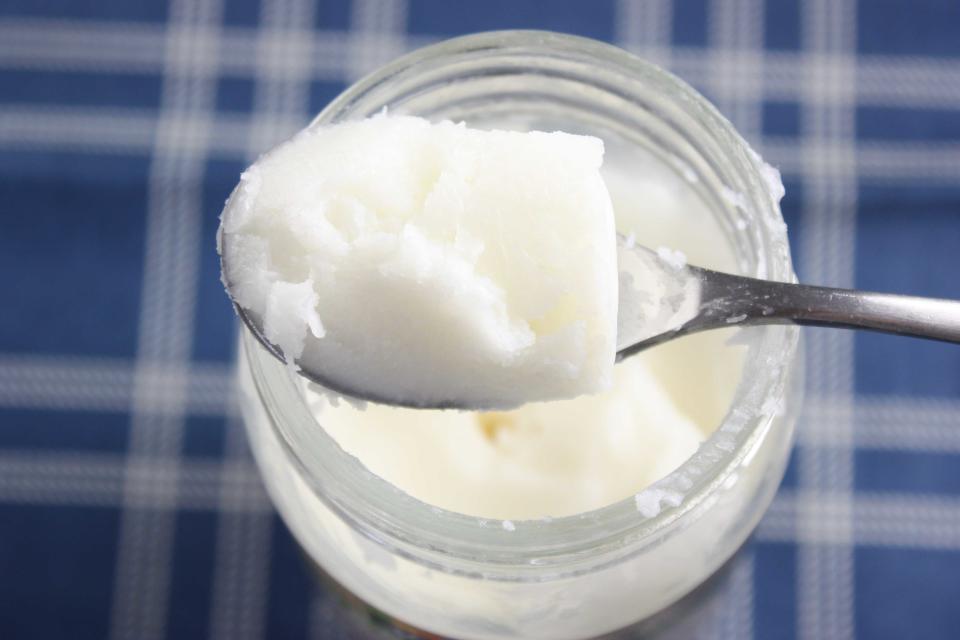6 Easy Smile-Whitening Hacks For Sensitive Teeth

For the thin-skinned, a subtle jab can wound a psyche, bruise an ego. But for the thin-enameled, even the slightest insult-brushing with an ill-suited toothpaste, say, or crunching the ice from a G&T-can breed far more palpable pains. Dentists dub them "zingers." (Cute.) We call them razor-sharp and unstoppable. (Same difference?)
For those unwilling to grin and bear it, the pain can make tooth whitening, by any serious measure, an impossible dream. So we hit up experts for gentler brightening strategies for sensitive teeth. Most can naturally buff away surface stains, but keep in mind, "to successfully reverse deeper internal stains, you still need a chemical reaction involving peroxide," says Emanuel Layliev, director of the New York Center for Cosmetic Dentistry.
With some patience and persistence, these chem-free, pro hacks should get you a shade or two whiter for the holidays-and without testing your pain threshold.
1. START WITH A BRUSH THAT WON'T TRAUMATIZE YOUR TEETH.

Beyond any high-tech bells or whistles, the best stain-stopping brushes have a "soft, non-aggressive electric action" and bristles that have been "end-rounded," so the tips are domed, not pointy, and can adequately attack plaque without eroding protective tooth enamel, explains Mark Burhenne, a cosmetic dentist in Sunnyvale, CA. Replacing your brush every three months, before those curved ends wear thin and jagged, can also prevent trauma, keeping teeth pearly and gums intact. (Dr. Burhenne's go-to brand, Quip, automatically sends out replacement heads quarterly.)
A good everyday paste, like Supersmile Whitening Toothpaste, is equally essential. Look for one with remineralizing calcium and phosphates to boost shine, and avoid formulas with parabens, sulfates, triclosan, and microbeads.
2. BE VIGILANT ABOUT BRUSHING AFTER EATING FOODS THAT STAIN

While prevention is always aces, the most serious stain-inducers are things you probably don't want to live without-namely coffee and wine (fairer varieties, like blanc and rosé, included). According to William Graves, an oral surgeon in Amarillo, TX, coffee tarnishes mainly by way of its polyphenols, and intriguingly, both espresso and cold brews (à la Grady's, pictured above) contain less polyphenols than traditionally brewed java. With wine, it's the acids that "etch the teeth at a microscopic level, leaving them susceptible to stains," says Dr. Graves. Pairing vino with cheese can happily curb such corrosion by coating teeth with a shield-like layer of protein. Of course, brushing soon after imbibing darkening beverages will help, too.
3. GET COMFORTABLE WITH ACTIVATED CHARCOAL

The magic ingredient behind those trendy blackened bristles and pastes (like Curaprox's new Black is White Collection), activated charcoal "has been used medicinally for ages to help trap toxins, and more recently to lift stains off of teeth," says New York City dentist Victoria Veytsman. "While there is anecdotal evidence behind its purifying and brightening properties, charcoal is inherently abrasive, and overusing it may damage tooth enamel and gums." Save it for pre-party brushing-it truly does give an instant gleam-or skirt the risk by swishing with non-abrasive Dr. Brite Activated Charcoal + Mint Mouth Rinse. One final caveat: If you have crowns or veneers, skip charcoal altogether, advises Dr. Graves, as the tiny particles can penetrate and discolor porcelain.
4. YES, OIL PULLING REALLY DOES WORK.

Yet another repopularized-by-Paltrow ritual, oil pulling is the ancient practice of swooshing with coconut oil for about 20 minutes, ideally before morning teeth-brushing. If you can manage to move the slick, semi-solid goop around your mouth for that length of time without gagging, "the oil will bind to the fatty membranes surrounding the bacteria and the toxins they secrete, loosening them from the surface of your teeth, and pulling them out of your mouth upon rinsing," explains Dr. Veytsman. (Coconut is also bacteriostatic, meaning it stops germs from multiplying.) While there are limited large-scale studies on oil pulling for oral heath, "patients who've tried it have reported fresher breath and whiter teeth," she says.
5. TRY A MUD MASK FOR YOUR MOUTH

Both bentonite and kaolin clays are "abrasive enough to remove yellowing plaque and odor-causing substances from teeth, but not rough enough to damage the enamel," says Dr. Graves. Kaolin gives Lush Tooth Powders their gentle polishing power. As a bonus, the Ultrablast flavor also boasts wasabi, which contains spicy isothiocyanates "shown to inhibit the growth of cavity-causing bacteria," adds Dr. Graves.
6. VITAMIN K2
In a game of Word Association: The Beauty Edition, we'd link vitamin K to eye cream for its role in disappearing dark circles by curing leaky capillaries through blood clotting. Dr. Burhenne, however, connects the compound with strong, sparkling teeth. "Vitamin K2-specifically two versions, MK-4 and MK-7-is crucial to the health of the tooth, especially the dentin, which is the substance behind the enamel, which continues to form throughout life, but tends to yellow with age," he explains. We can slow this gradual staining with a daily dose of K2, which helps rebuild the tooth and encourages the constant renewal of dentin. Since the modern Western diet typically lacks this nutrient-it's found mainly in pastured products, like grassfed butter, and fermented foods, like natto-Dr. Burhenne takes and recommends this supplement: Relentless Improvement Vitamin K2 MK-4 + MK-7 Dietary Supplement.

[contentlinks align="center" textonly="false" numbered="false" headline="Related%20Story" customtitles="The%20Top%20Dentist-Approved%20Ways%20to%20Whiten%20Teeth" customimages="" content="article.8424"]
You Might Also Like

